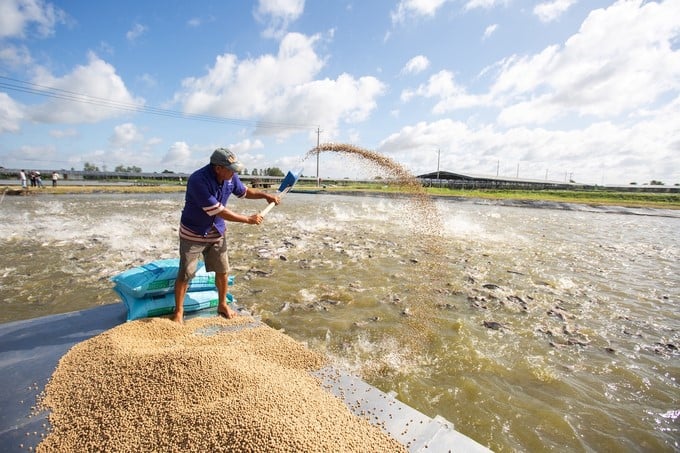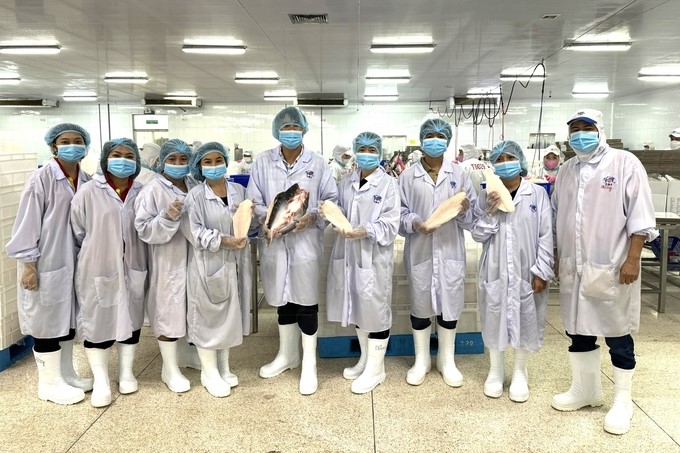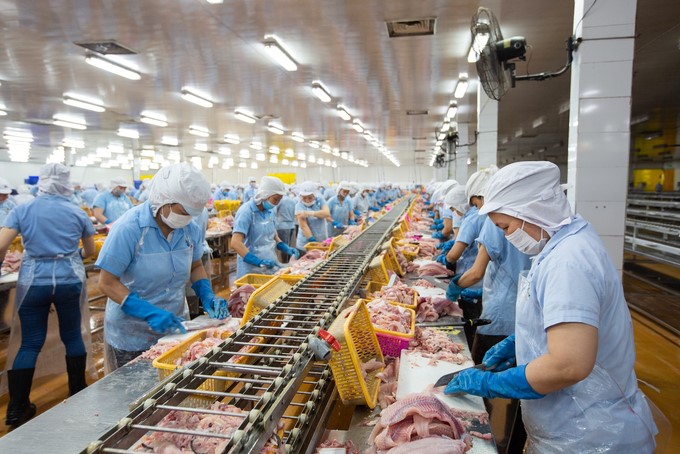November 24, 2025 | 22:39 GMT +7
November 24, 2025 | 22:39 GMT +7
Hotline: 0913.378.918
November 24, 2025 | 22:39 GMT +7
Hotline: 0913.378.918

The number of catfish is lost up to 30–50% during the commercial farming stage. Photo: ACIAR.
The "Food loss in the catfish value chain in the Mekong River Basin" project is co-sponsored by the Australian Center for International Agricultural Research (ACIAR) and the International Development Research Center (IDRC).
The project aims to identify current and future food loss and waste situations in the catfish supply chain in the Mekong River Basin in Vietnam, Laos, and Cambodia and develop intervention solutions to reduce losses.
One of the project's main goals is to increase the research capacity on food loss for researchers in the three countries participating in the project. They have been trained on value chain, social research, and skills in data collection and interaction with businesses and stakeholders.
The groups were also trained on the foresighting technique to analyze risks by envisioning probable developments in the catfish supply chain in the future.
After training, the project has built and tested value chain research tools to serve the data collection expected to take place in July and August 2024. The project's main research objective is to evaluate key value chains in the catfish industry in Vietnam, Laos, and Cambodia.
Because women and men both play important roles in catfish production processes in the supply chain, the project team also researched gender documents for research activities.
In May 2024, the University of Adelaide's Center for Global Food and Resources organized a workshop with the participation of researchers in all three countries to identify key catfish value chains, evaluate progress, and agree on an approach along the pangasius value chain, focusing on the Mekong Delta region of Vietnam. Each country then agreed on key catfish value chains to include in research activities.
Initially, research groups in each country conducted meetings and interviewed key informants in the supply chain. Losses and wastage of raw materials and value (money) are recorded along the chain, from catfish parents to fingerlings, raised on the farm, transported from the farm to the factory, processed, and consumed.

Vietnam's researchers visited the Sao Mai catfish processing factory in Dong Thap province in February 2024. Photo: Trinh Thi Lan, An Giang University.
Scientists then converted the value of these losses into money while also recording other forms of loss, revealing a significant total loss occurring across the entire catfish industry.
This is just an initial preliminary study. A larger-scale survey will be conducted in 2024 to refine the value chain analysis and better understand food loss and waste, as well as losses in other supply chains.
However, the initial preliminary research results have shown significant losses in the supply chain, especially in the stages of breeding, commercial growing, harvesting, transportation, and processing. Interviews with fingerling farmers, commercial farmers, transporters, and factories in An Giang province in January 2024 provided the following information:
+ Fingerling stage (90 days): The survival rate was previously 10–12% and has now decreased to 2–3%; the highest survival rate today is 5% on average.
+ Commercial farming stage (8–10 months): Fish loss is up to 30%–50% of fish heads. Extended fish harvest time will cause economic losses due to the loss of additional feed costs, and oversized fish will have to be sold at a lower price. Other losses include wasting sediment and farm water, which could be used to make organic fertilizer and artemia to raise pangasius seed but are not fully utilized.
+ Harvesting at the farming pond: Head loss rate is 1–2%; selling price reduced by 86% for dead fish (dead fish selling price is VND 4,000/kg, compared to live fish of VND 28,000/kg).
+ Transportation: loss of 4–5% from the pond to the rowboat and 1–2% on the rowboat during transportation; 86% discount on dead fish.
+ Processing: percentage of loss varies depending on fish size and quality, technical performance of fillet workers, and total inventory. Waste occurs when by-products such as fish blood are not utilized effectively. Fish skin, which was previously wasted, is now used to make high-value collagen products.

The ACAIAR project team improved understanding of the processing processes in the factory and physical loss assessment. Photo: ACIAR.
The project encountered many challenges in applying new concepts of foresighting, value chain mapping, and gender research in the catfish supply chain.
However, experts in these research fields have participated in training project staff, and as a result, the research capacity of the groups in the three Mekong River Basin countries has been significantly improved. This is all thanks to the interdisciplinary and comprehensive property of the team involved in the project.
By combining skills, the project team developed a specialist understanding of aquaculture, processing processes in the factory, and physical loss assessment. Economic and social researchers brought expertise in economic damage analysis, stakeholder mobilization, and ways of collaborating with external partners, including governments and businesses, to better understand food and non-food losses during the research process. The project's aim is to use this knowledge to develop strong intervention solutions to reduce food and non-food loss and waste in the catfish farming industry in the Mekong River Basin.
The project appreciates the contributions of research partners, including the Ministry of Agriculture and Rural Development, the Vietnam Directorate of Fisheries, the University of Economics Ho Chi Minh City, the New England University, the Swinburne University, the Australian National University, An Giang University - Vietnam National University Ho Chi Minh City, Royal University of Agriculture of Cambodia, Vinh Hoan Company Limited, Viet-Australia Joint Stock Company, Nam Viet Joint Stock Company, Sao Mai Joint Stock Company, and farmers and farming, processing, and transportation businesses participating in interviews.
Translated by Thu Huyen

(VAN) Green transition is crucial for the Mekong Delta amid climate change and stricter standards, offering a path toward sustainability.

(VAN) Dong Thap promotes agricultural restructuring, forms large specialized farming zones, raises the value of agricultural products and develops toward ecological and high-tech directions.
/2025/11/22/4018-4-213342_747.jpg)
(VAN) The Mekong Delta Agricultural Experts Club has attracted 143 experts and researchers to participate in providing consultancy and contributing initiatives to the development of one million hectares of high-quality rice.

(VAN) Ca Mau’s development of OCOP products opens a path to increasing cooperatives value, helping boost income, expand markets, and affirm collective economy's role.

(VAN) Turning seemingly ordinary coconut shells into unique jewelry and artwork, Nguyen Bang Nhi spreads the value of local culture through her brand, Cocohand.

(VAN) Results from the Sustainable Durian Model Project in Dak Lak have confirmed the critical role of Yara Viet Nam in transferring advanced nutritional solutions to farmers.

(VAN) In Tuyen Quang province, livestock farmers have introduced effective models and innovative practices that significantly strengthen African Swine Fever prevention and control efforts.